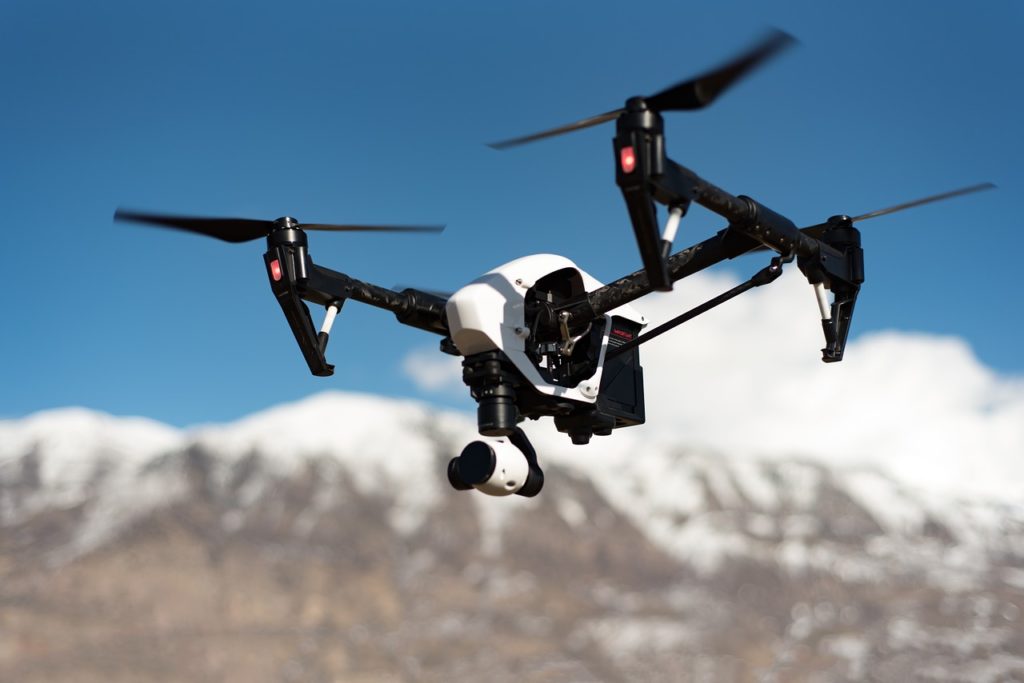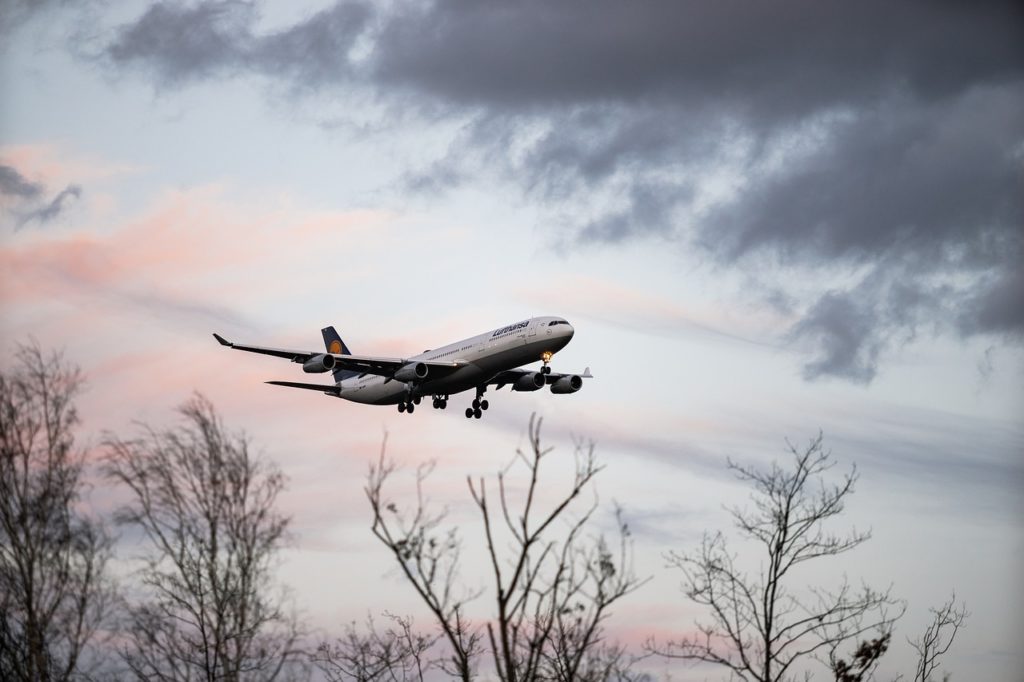Every time a drone takes to the air, it creates a certain amount of liability for the operator. We’ve set out to provide you with the tools for a better understanding of the intricacies of drone insurance.
Unmanned aerial systems (UAS), more commonly known as drones, have taken the world by storm. From flying off the shelves as Christmas gifts to flying over and surveying some of the most complex engineering structures, drones are revolutionizing the way we view the world as a whole.
But drones have also introduced an entirely new and unforeseen type of risk into our world, risk which involves the very real prospect of UAS impacting property and pedestrian activities. For the sake of all parties involved, drone insurance is strongly encouraged. But how do you know what type of drone insurance you need, how do you determine if it is reputable, and how do you know how much coverage is sufficient? Below we delve into these questions and more.

Who needs drone insurance?
The short answer to this question is: everyone! Well, sort of. There are cases for recreational users to have insurance and certain cases where they do not need to invest in it. A lot of recreational users will be less than enthusiastic to shell out money for insurance for the $50 beginner drone they bought on Amazon. However, all commercial drone operators (those flying drones for a business purpose) need to be insured while operating their aircraft in a commercial capacity, of which there are a significant number of options.
There are a lot of reasons why a recreational pilot would need to get insurance for flights, and it is not one size fits all. If you are a landowner in rural America and use your drone to track game, monitor crops, for example, you are probably not concerned about a flyaway incident or accidentally striking a neighbor’s property, so getting insurance is not overly important. Of course, if you have purchased expensive sensors or cameras for your drone, you may want to consider insurance on those specifics, which we discuss in detail below.
What does liability limit mean in drone liability insurance?
Just like homeowner’s insurance or auto insurance, the liability limit is, simply put, the number of damages your policy will cover if you are found liable to pay for someone else’s medical bills, or property damage. Also, this insurance covers costs of litigation for invasions of privacy, a rapidly growing type of litigation stemming from drone use.
Liability coverage may be as low as $250,000, all the way up to $25 million. Your out of pocket premium only rises a little to increase liability coverage significantly, and legal fees add up very quickly, so we advise that you do not cheap out on this particularly important part of your drone insurance coverage.
How much does drone insurance cost?
If you are lax about buying it, not having drone insurance can cost you your livelihood! All dramatization aside, the cost of drone insurance is very low as opposed to having to foot the liability of an incident out of pocket.
This question is, though, how much do you need to buy? We generally associate all insurance with an annual policy as in a house, a boat, a car, or an airplane. These are expensive items where the owner needs them to be insured both when they are in operation, as well as when they are sitting static.
However, drones are a different animal from the aforementioned items. Drones, even high-end models, seldom are valued at more than $2,000-$3,000 for the basic hull and stock camera. But when commercial drone operators start adding on specialized sensors, the value quickly multiplies with aftermarket sensors ranging from the $4,000-range, to nearly $13,000 for a high-end multispectral sensor.
In this scenario, it is not uncommon to have a unit pushing $15,000-$20,000 in value, which can all be gone is a split second in the case of an unfortunate accident. This is an example of a unit that should be insured with an annual policy with physical damage protection add on, which are very reasonable in price, in the ballpark of around $10 per month without flight liability. Flight liability is another add-on, which is a must-have for the commercial drone operator.
The nice thing about the flight liability add-on is that you can add it on in the capacity of a per day, monthly, or it can also be added annually. The decision for which is best depends on how often you will be using it in flight status. If your business is booked and flying all of the time, you’d be better off opting for the annual plan. It will be a lot less expensive per day to purchase a long duration plan.
Sensor insurance
Many commercial drones are modular machines, with the ability to change out sensors and cameras depending on different missions and objectives.
DJI’s Zenmuse cameras and sensors are built for a very wide variety of missions and markets, for forestry, agriculture, and professional photography (both stills and video). They range in cost from around $1,000 to a radiometric thermal imaging camera which weighs in at $14,325 (at all retailers). This is where a rider known as payload insurance is added in.
Where hull insurance is purchased to cover the cost of the drone itself, it is not necessarily enough to cover the value of some of the extremely expensive sensor and camera packages on the market. With a DJI Matrice coming in over $5,000 alone, along with up to nearly $15,000 for a high-level sensor, the minor cost of adding on hull insurance and payload insurance is a no-brainer.
Incidentally, there is another rider for ground equipment insurance which may be of value to the commercial drone operator to insure under their drone insurance policy. The environments where drones are routinely operated can certainly be considered harsh and austere (think oil rigs in West Texas, pipelines in Canada, and North Dakota in the winter). Not only are the drones under stress, but so is the sensitive ground equipment which reads and processes the data from the drone. The ground equipment rider offers peace of mind when you take to the harshness of the field to do work, knowing that it could damage your non-flying equipment suite.
Drone insurance territory restrictions
Now that we have a better familiarity with the types of insurance that are available and what it is that they do and offer, we need to take a look at some of the nuts and bolts of those policies.
One issue which is very important when commercially operating your drone while insured is knowing that it is insured when and where you are operating it. All policies of drone insurance have territory restrictions. Most policy territory restrictions are either nationwide or global, but you need to comb through the fine print of your policy and find out what exactly it is.
For example, if you are operating in Seattle and take a gig in Vancouver, you need to make sure the territory includes either Canada or is worldwide.
Conditions which void drone insurance
So, the worst-case scenario pans out and something has happened either to or involving your drone while you are operating it commercially. But since you have dutifully purchased liability coverage, hull insurance, and payload insurance, you are covered. But what if, upon filing your claim, your insurance provider comes back and say that you’ve voided the contract? Let’s have a look at a few ways you could encounter this scenario.
First and foremost, are you a holder of a valid Part 107 pilot certificate? This is absolutely a showstopper in terms of making a policy null. If you are operating a drone commercially, you must be a licensed drone operator.
Flying your aircraft beyond visual line of sight is explicitly prohibited per § 107.31 unless a waiver has been approved. This is a pretty serious situation, and has shut down operators. If you have an incident or an accident, especially one which results in damage caused by you, you will be cooked if they find that you were operating was beyond the line of sight. This is an absolute no-go.
Airspace violations will also leave you holding the liability bag. You may be flying a highly-evolved remote-controlled aircraft, but you are absolutely playing in the FAA’s sandbox, and an airspace violation is very serious. First and foremost, determine what airspace you are going to be operating in, and pay very close attention to Delta, Charlie, and Bravo. Download the B4UFLY app and see what airspace you are going to be in beforehand. Go site survey anything anywhere near an airport or airfield, talk to the airport manager, communicate the date and time of your planned flight, your route of flight, altitude, checkpoints, and anything else that they request. Then, get your approval in writing.

Another activity that can land you in liability trouble is flying over congested areas, specifically directly over other people. 14 CFR § 107.39 prohibits overflights of human beings unless they are directly involved in the UAS operation, or they are protected by a covering, i.e. the roof of a building. So, you can imagine that if you are in violation of 107.39 and strike a person who is not part of your ensemble, you will not be covered by your liability insurance policy. You will be on your own in litigation.
The last of the big and obvious scenarios that void drone insurance policies is breaching the 400’ AGL ceiling imposed by, you guessed it, Part 107 rules (specifically 14 CFR § 107.51). The exception to this is when operators fly on a structure, in which the drone might be 400’ higher than the uppermost extremity of the structure. This is another of the rules which can get you in immediate hot water if violated, particularly in the vicinity of an airport.
Beyond these fairly obvious violations, you will need to study your policy carefully to determine what activities are not covered; it would be a real tragedy to lose out on your claim based on a technicality. You can count on anything which violates Part 107 rules to void your policy and leave you in the lurch. It is up to you, the operator, to know your policy thoroughly, and perhaps more importantly, to know the rules which pertain to UAS operations. Yes, they are often hard to digest and difficult to understand, and yes, you will get burned if you do not abide by them so please go into the combined federal code and read Part 107. Then read it again.
Conclusion
We have taken a look at a lot of the common terms and types of insurance programs for drones, and also what exactly can get you out of the good graces of your policyholder. Ultimately, it is up to you to know what the restrictions and limitations are in your policy, and it is absolutely up to you to know the rules of drone flying, which are numerous because if you break those and something happens, you are not going to be covered. Whatever you do, be safe out there.
